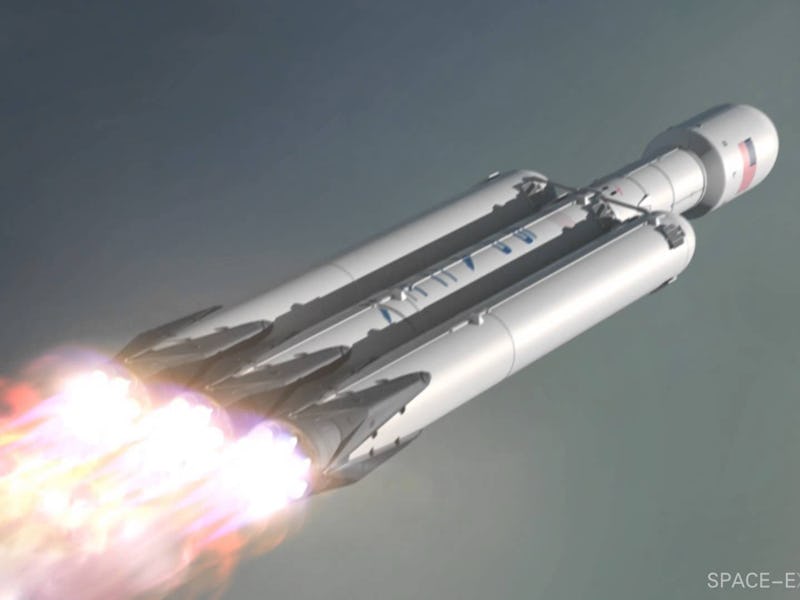
It’s a mission years in the making. Early in the afternoon of February 6, the window opens for the first ever launch of SpaceX’s Falcon Heavy rocket as it blasts off from the Kennedy Space Center in Florida. But that’s just the start of the mission — for the story to end as SpaceX hopes, the company will rely on something called a Hohmann transfer.
SpaceX CEO Elon Musk has been upfront about the possibility the rocket could explode shortly after launch, taking with it its payload, Musk’s own Tesla Roadster. If all goes as planned, though, the sports car will go to Mars… sort of.
The car won’t actually land on Mars — although if SpaceX were going to try to do that, “crash onto Mars” is probably the better way to put it — nor will it be put into orbit around the red planets. The technical intricacy needed to launch a rocket, accelerate it to interplanetary speeds, and then slow it down so that a payload, sports car or otherwise, can move into stable orbit around another planet is way beyond what SpaceX has yet accomplished.
That’s not the sort of thing someone, even Elon Musk, would just indirectly announce in a tweet about the Falcon Heavy’s cargo. But yes, you’d be forgiven for thinking he implied that.
What Musk called a “Mars orbit” would more accurately be called something like an Earth-Mars orbit — basically, it’s an extremely elliptical orbit around the sun in which the Earth is the nearest point and Mars is the furthest point.
Since SpaceX has specifically chosen the orbital path that requires the smallest amount of energy, this would more technically be what’s known as a Hohmann transfer orbit, named for the early 20th century German engineer and rocket scientist who devised it.
Think of Musk’s Tesla Roadster as a kind of artificial comet, albeit one tracing a much shorter tour through the solar system than its real counterparts, which can take anywhere between decades and millennia to carve their path through the solar system’s outer reaches. This plan also clears up how a sports car can be expected to get to Mars in any sense without any additional rockets to accompany it — Falcon Heavy is just being used to get the payload into space, and from there the orbital dynamics of the Hohmann transfer take over.
Going forward, these Hohmann transfers will likely prove critical to SpaceX’s long-term Mars plans with its recently announced BFR interplanetary spacecraft, as they shorten trip times and reduce energy requirements. Before the BFR unveiling, the company’s future plans revolved around using Falcon Heavy rockets and the Hohmann transfers starting as early as 2018 to start supply drops on Mars in preparation for future crewed missions.
Whatever happens next, the upcoming launch is as good an opportunity as any to get up to speed on a bit of astrophysics that will likely underwrite much of SpaceX and others’ Mars plans for years to come.